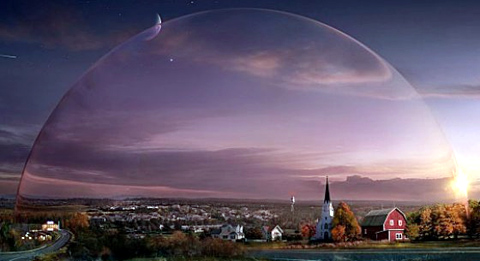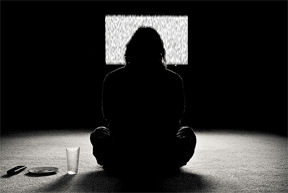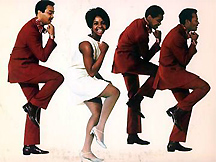 The European Commission has finally made a ruling on harmonising spectrum for programme making and special events (PMSE) use. PMSE includes things such as radiomicrophones and in-ear monitors that allow performers to hear themselves think whilst on a noisy stage.
The European Commission has finally made a ruling on harmonising spectrum for programme making and special events (PMSE) use. PMSE includes things such as radiomicrophones and in-ear monitors that allow performers to hear themselves think whilst on a noisy stage.You would think that the PMSE community would be cock-a-hoop about the fact that their needs had been recognised at a European level and that spectrum had been safeguarded for their specific use, but it appears that many in the industry believe it is too little. A spokesperson for the Association of Learned Engineers of Sound (Asso.LES) told Wireless Waffle:
All video and audio broadcasts use wireless devices in their production. The paltry and squalid spectrum being offered by the Commission will cause many thousands of creative, cultural and media industry workers to suffer harmful interference leading to infection and death. Add to this the many churches, schools and hotels who use wireless microphones and this ruling could cause a catastrophic failure of society. We could see plagues, widespread rioting and a failure of social cohesion resulting in a cataclysmic new world-order, not to mention the need to put up new antennas in some theatres.
No one from the Commission was available to comment, however Jörg Van Beaulieu who has a name that sounds like they could work for the Commission, was heard to comment:
Asso.LES couldn't see a gift horse if it kicked them in the face. The Commission has done its calculations and as far as we can see, the only events that will require more spectrum than we are offering are the Eurovision Song Contest and one or two occasions when sporting events occur on the same date as One Direction concerts - interruptions to which we believe the socio-economic impact would be low.
 The impact on the Eurovision Song Contest will come as a blow to its millions of fans both in Europe and across the world. Next year's organisers, ORF have already been in crisis discussions with the Austrian government and the European Commission and have issued this statement:
The impact on the Eurovision Song Contest will come as a blow to its millions of fans both in Europe and across the world. Next year's organisers, ORF have already been in crisis discussions with the Austrian government and the European Commission and have issued this statement:On advice of the Bundesministerium für Verkehr, Innvation und Technologie (BMVIT) we have decided to move the location of the competition next year from Vienna to Attnang-Puchheim. The town's railway marshalling yard will be flattened and a metal cage will be erected around the area to seal in the radio spectrum so it can be used for the Contest. We are sure that this will allow this critical European cultural event to go ahead without problems of interference from mobile phones or potentially dangerous inter-galactic laser beam weapons.

Meanwhile it is understood that the Council of Westminster are considering similarly drastic steps and that plans to demolish the majority of the West End to allow a protective metal dome to be built around London's infamous theatre district are well developed. The spokesperson for Asso.LES said that this move was welcome and rightly recognised the economic importance of radio microphone users above all other members of society.
add comment
( 673 views )
| permalink
| 



 ( 2.8 / 1585 )
( 2.8 / 1585 )




 ( 2.8 / 1585 )
( 2.8 / 1585 )
 It could be argued that before the switch-over from analogue to digital television broadcasting, the value of terrestrial broadcasting was on the decline. Faced with fierce competition from cable and satellite, each offering 10 or more times the number of programmes, terrestrial television was a poor cousin whose main use was often to deliver public service broadcasting and, through general interest obligations imposed by national governments, to provide an accessible (free-to-air) service to 95% or more of a country's population (measured both geographically and demographically).
It could be argued that before the switch-over from analogue to digital television broadcasting, the value of terrestrial broadcasting was on the decline. Faced with fierce competition from cable and satellite, each offering 10 or more times the number of programmes, terrestrial television was a poor cousin whose main use was often to deliver public service broadcasting and, through general interest obligations imposed by national governments, to provide an accessible (free-to-air) service to 95% or more of a country's population (measured both geographically and demographically).As digital switch-over has taken hold, terrestrial broadcasting has had a repreive and is now able to offer true multi-channel television. Where previously it was only possible to broadcast a single television station on a single frequency, that frequency can now hold 10 or more standard definition (SD) channels, or 4 or 5 HD channels. Where there may have been 6 analogue stations on air, there can now be upwards of 60 stations. In many cases, 60 stations is enough for the average viewer and the bouquets of channels offered on cable or satellite may now begin to seem expensive compared to free-to-air DTT. In many countries the draw of cable and satellite TV is no longer the sheer variety of channels available, but the premium content that is on offer. Pay-TV services offering sport and movies continue to be popular, but such premium content is not usually available on DTT. Nonetheless, for many viewers DTT is perfectly sufficient.
 But just as digital terrestrial TV (DTT) has had a new lease of life, the other broadcasting platforms are once again biting at its heels with new service offerings. Whilst 3D television seems to have taken a back seat for the time being, new, even higher definition television, is stepping to the fore. Ultra-High Definition (UHD) has twice the resolution of standard HD and large UHD televisions are already on show and on sale in many retailers. At present there is minimal UHD content, however a hand full of new UHD channels are being launched and, for example, the World Cup football in Brazil will be broadcast in UHD.
But just as digital terrestrial TV (DTT) has had a new lease of life, the other broadcasting platforms are once again biting at its heels with new service offerings. Whilst 3D television seems to have taken a back seat for the time being, new, even higher definition television, is stepping to the fore. Ultra-High Definition (UHD) has twice the resolution of standard HD and large UHD televisions are already on show and on sale in many retailers. At present there is minimal UHD content, however a hand full of new UHD channels are being launched and, for example, the World Cup football in Brazil will be broadcast in UHD. To be able to see the difference that UHD makes compared to standard HD, a very large television set is needed (42 inches or greater) and it could therefore be argued that UHD will always be a niche product. Then again, many broadcasters believed that HD would be a niche, but it is becoming the de facto standard and average television sizes are on the increase.
Technically speaking, UHD requires a bit-rate of around 20 Mbps. Whilst such bit rates are relatively easy for cable and satellite networks to deliver, broadcasting UHD over DTT would require at least half of a DVB-T2 multiplex, and the most advanced video (HEVC) codecs. In practice this means that were a terrestrial frequency currently carries 10 or more SD, or 4 or 5 HD channels, it might, at best, be able to offer 2 UHD channels.
 But that is not the end of the story. Just around the corner is super-high vision (SHV), sometimes called 8K, which once again doubles the resolution of the picture compared to UHV. SHV will require around 75 Mbps to be broadcast and at this point, whilst cable and satellite are still in the game, DTT is no longer able to broadcast even a single programme on a single frequency (without very complex transmitter and receiver arrangements that would require, for example, householders to install new, and potentially more than one, antenna). Of course to benefit from SHV, an even larger TV screen will be necessary, but with the growth in home cinema, it is can perhaps be expected that in time, a goodly proportion of homes will want access to material in this super high resolution.
But that is not the end of the story. Just around the corner is super-high vision (SHV), sometimes called 8K, which once again doubles the resolution of the picture compared to UHV. SHV will require around 75 Mbps to be broadcast and at this point, whilst cable and satellite are still in the game, DTT is no longer able to broadcast even a single programme on a single frequency (without very complex transmitter and receiver arrangements that would require, for example, householders to install new, and potentially more than one, antenna). Of course to benefit from SHV, an even larger TV screen will be necessary, but with the growth in home cinema, it is can perhaps be expected that in time, a goodly proportion of homes will want access to material in this super high resolution.So where does that leave DTT? Arguably, within a few years, it will once again be unable to compete with the sheer girth of the bandwidth pipe that will be provided by cable and satellite networks. It's probably worth noting at this point that most IP-based video services (with the possible exception of those delivered by fiber-to-the-home) will also be unable to deliver live SHV content. This time there will be no reprieve for DTT as it simply does not have the capacity to deliver these higher definition services.
What is therefore to be done with DTT? Is it necessary to provide continued public service, universal access, free-to-air services that were the drivers for the original terrestrial television networks? Is its role to provide increased local content which might be uneconomic to broadcast over wide areas? Should it be used to deliver broadcast content to mobile devices where it has more than sufficient capacity to provide the resolution needed for smaller screens? Or, should it be turned off completely, and the spectrum it occupies be given over to something or someone else?
In countries where cable and satellite penetration is already high, there is arguably nothing much to lose by switching DTT off. In Germany, for example, RTL have already withdrawn from the DTT platform and there is talk of turning off the service completely. In countries that have not yet made the switch-over, it might be more cost effective to make the digital switch-over one that migrates to satellite (and cable where available) than to invest in soon-to-be-obsolete DTT transmitters.
 Broadcasters should be largely agnostic to the closure of DTT. After all, their business is producing content and as long as it reaches the audiences, they ought not to care what the delivery mechanism is. Other radio spectrum users (e.g. mobile phones, governments) would surely welcome the additional spectrum that would become available. So who loses? Those companies who currently provide and operate the DTT transmitter networks, such as Arqiva in the UK, Teracom in Sweden and Digitenne in the Netherlands, who stand to lose multi-million pound (or Euro) contracts. For these organisations the stakes are high, but even the most humble economist would surely admit that the benefits elsewhere outweigh the costs. So let's turn off DTT - not necessarily today - but isn't it time to plan for a 'digital switch-off' to follow the 'digital switch-over'?
Broadcasters should be largely agnostic to the closure of DTT. After all, their business is producing content and as long as it reaches the audiences, they ought not to care what the delivery mechanism is. Other radio spectrum users (e.g. mobile phones, governments) would surely welcome the additional spectrum that would become available. So who loses? Those companies who currently provide and operate the DTT transmitter networks, such as Arqiva in the UK, Teracom in Sweden and Digitenne in the Netherlands, who stand to lose multi-million pound (or Euro) contracts. For these organisations the stakes are high, but even the most humble economist would surely admit that the benefits elsewhere outweigh the costs. So let's turn off DTT - not necessarily today - but isn't it time to plan for a 'digital switch-off' to follow the 'digital switch-over'?Friday 7 February, 2014, 13:43 - Broadcasting, Licensed, Much Ado About Nothing
Posted by Administrator
What a disappointment it was to find a recording called 90 years of the time pips, to discover that it is a special version of the pips¹ designed to celebrate their 90th birthday.Posted by Administrator
Wouldn't it have been more fun to have calculated how many pips there have been in 90 years and then created audio that just pipped (or beeped continuously) through all 90 years? How many pips would that be?
90 years × 365.25 days × 24 hours = 788,940 hours²
The first 5 pips have a duration of a tenth of a second, and the final pip has a duration of half a second, so the total duration of the pips each hour is exactly 1 second (5 × 0.1 + 0.5). A constant tone of duration 788,940 seconds (which is 9 days, 3 hours and 9 minutes precisely) would therefore represent '90 years of the time pips' much more accurately.
So here for your listening pleasure, is the Wireless Waffle tribute to the pips... 90 years of pips compressed into 9 days, 3 hours and 9 minutes.
 ¹ Not to be confused with Gladys Knight's backing group who, whilst also played on the BBC from time-to-time, are not the pips in question here.
¹ Not to be confused with Gladys Knight's backing group who, whilst also played on the BBC from time-to-time, are not the pips in question here.² Of course the pips have not been broadcast every hour over that period. Other time signals (such as the chimes of Big Ben) are used on some hours. Equally the BBC has not always been a 24 hour service, so this figure is probably a significant over-estimate.
Wednesday 29 January, 2014, 11:01 - Licensed
Posted by Administrator
It's a surprise that there haven't been more reports of this, but it seems that the Local TV services licensed by Ofcom last year are beginning to come online. The video clip below shows test of one of the two national channels that will be operated by Comux (to try and generate enough profit to run the transmitters) as received in Clacton, Essex. The signal comes from the Crystal Palace transmitter in London.Posted by Administrator
There doesn't yet seem to be placeholder for London Live which will launch in the capital in March on channel 8 on Freeview, but the two national channels awaiting launch and currently sat on channels 791 and 792 so you can check whether you will be able to receive it (a re-tune may be necessary).
The first of the new raft of local TV stations on the air was Estuary TV in Grimsby, whose transmitter also does a pretty good job of covering nearby Kingston-upon-Hull.
Wireless Waffle previously reported on the lessons to be learnt from the failed attempts at local TV in the UK in the past, and on the uncanny similarity between Comux (the local TV network operator) and Arqiva (who are providing the transmitters to Comux.
There are still a large number of local TV transmitters to be put on-air, so keep checking your set-top-boxes for new channels. Oh, and whilst you're at it, see if you can get the additional Freeview HD multiplexes that have quietly launched around the UK providing such excitement as BBC4 HD and Al Jazeera HD. Why couldn't they have put something useful in HD such as Dave or Film4?
You can check the channel line up on Freeview at your location by using the handy form below.


